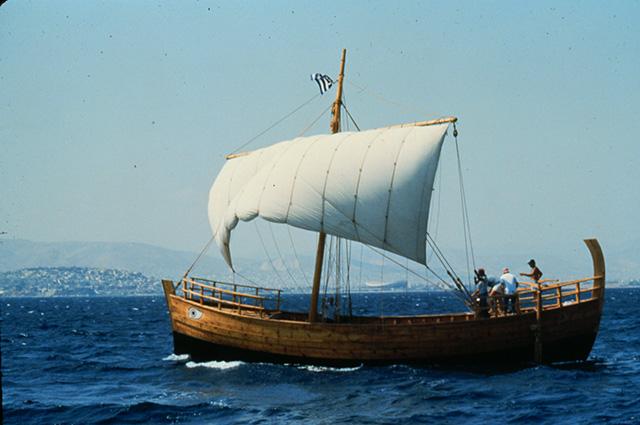The timeline of the Kyrenia’s provenance and the exact date of its sinking has always been uncertain. However, recent research by Cornell University has shed new light on the famous Hellenistic-era shipwreck. Discovered off the north coast of Cyprus in the 1960s, the Kyrenia shipwreck contained thousands of almonds in jars among its cargo, providing valuable clues to its history.
After meticulous analysis of the almonds, wood samples, and radiocarbon dating, the Cornell Tree-Ring Laboratory determined that the Kyrenia likely sank between 296-271 BCE, with a strong probability of 286-272 BCE. The findings were published in a paper titled “A Revised Radiocarbon Calibration Curve 350-250 BCE Impacts High-Precision Dating of the Kyrenia Ship” on PLoS ONE.
The Kyrenia shipwreck, considered the first major Greek Hellenistic-period ship found with its hull intact, has offered significant insights into ancient ship technology and maritime trade. Despite challenges in dating caused by artifacts like polyethylene glycol, new methods have enabled researchers to obtain a more accurate timeline for the ship’s sinking.
By combining statistical modeling, dendrochronology, and organic evidence from artifacts like ceramics and almonds, the researchers were able to narrow down the Kyrenia’s final voyage to between 305-271 BCE (95.4% probability) and 286-272 BCE (68.3% probability). This updated timeline not only clarifies the ship’s history but also contributes to revising the radiocarbon calibration curve for the period 400-250 BCE, benefiting researchers worldwide.
The study, led by Sturt Manning, Distinguished Professor of Arts and Sciences at Cornell, involved collaboration with experts from various institutions, including the University of Groningen and the University of California, Irvine. The findings not only enhance our understanding of the Kyrenia shipwreck but also have broader implications for radiocarbon dating in archaeological research.






